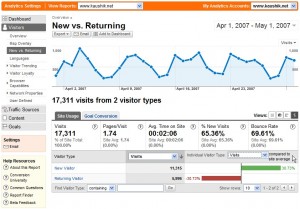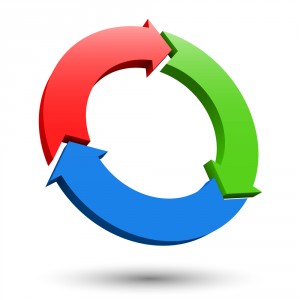How to Grow Your Business Faster with Website Visitor Tracking
![]() Thanks to the global reach of the internet, online competition is fierce. It doesn’t matter what industry you are in, there are countless companies across the world trying to secure the same leads as you. Businesses today must take advantage of new technology, like website visitor tracking, to ensure they are not missing out on any potential opportunities.
Thanks to the global reach of the internet, online competition is fierce. It doesn’t matter what industry you are in, there are countless companies across the world trying to secure the same leads as you. Businesses today must take advantage of new technology, like website visitor tracking, to ensure they are not missing out on any potential opportunities.
Faster Lead Generation
Many industry leaders have already discovered how they can use website visitor tracking and marketing automation software to grow their businesses faster. It is a simple and effective method for automatically capturing every lead that comes in contact with your website. It is estimated that 95% of the visitors on your site will end up leaving your site unnoticed, if you don’t use some form of website visitor tracking software.
Lead Profiling and Scoring
Bringing in more leads will most likely help to grow your business faster, but these results will be significantly amplified if marketers and sales professionals have a better understanding of each leads’ wants and needs. Website visitor tracking monitors a lead’s online behavior and then analyzes their unique buying process. When this program is accompanied with online registries, it can also provide valuable insight into a lead’s demographic characteristics. This will create a comprehensive lead profile.
Marketers can compare each new lead’s profile with existing clientele to determine their likelihood of conversion. This is referred to as lead scoring or ranking. Leads that demonstrate a significant potential for conversion can be passed immediately on to the sales department while those who are still undecided can remain in the marketing automation engine for further lead nurturing.
Lead Nurturing and Conversion
The lead profile that is generated by website visitor tracking software should provide a clear picture of what the lead is interested in and the questions they have about their buying decision. This will make it easier to grow your business by creating helpful and personalized lead nurturing content designed to answer every lead’s questions and concerns.
Generate, Profile, Score, Nurture, & Convert
Website visitor tracking allows you to grow your business faster by ensuring that no lead is missed, that every lead is profiled and ranked, and that content is customized to give leads the answers they need. It is the most effective marketing method for lead generation and the easiest way to gain greater insight into what it will take to convert a lead into a customer.










